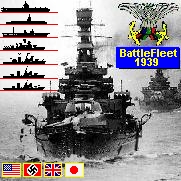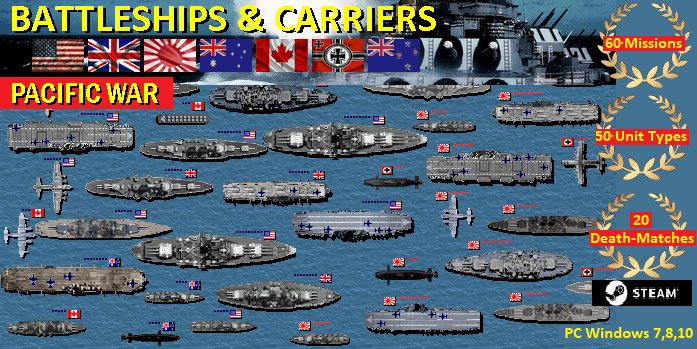See
also:
5th US Fleet US 6th Fleet USS Ranger USS Forrestal
Naval Navy
Tactics ASW AAW USN
Aircraft Carriers USS Kitty Hawk,
Enterprise, John F. Kennedy, Nimitz, Dwight D.
Eisenhower, Carl Vinson, Theodore Roosevelt, Abraham
Lincoln, George Washington, John C. Stennis, Harry S.
Truman, Ronald Reagan, George H.W. Bush USS Abraham
Lincoln CVN72 USS
Enterprise CVN65 USN
Cruisers 1 - USS Ticonderoga,
Vincennes, Valley Forge, Thomas S. Gates, Bunker Hill,
Mobile Bay, Antietam, Leyte Gulf, San Jacinto, Lake
Champlain, Princeton USN Cruisers 2 -
USS Chancellorsville, Cowpens, Gettysburg, Chosin, Hue
City, Shiloh, Anzio, Vicksburg, Lake Erie, Cape St.
George, Vella Gulf, Port Royal USN
Destroyers US Navy Amphibious
Assault Ships - LHA/LHD/LHA(R) USS Wasp, USS
Essex, USS Kearsarge, USS Boxer, USS Bataan, USS Bonhomme
Richard, USS Iwo Jima, USS Makin Island, USS Tarawa, USS
Saipan, USS Belleau Wood, USS Nassau, USS Peleliu SSN Attack
Sumbarines 1 SSN Attack
Sumbarines 2 SSBN Fleet
Balistic Missile Sumbarines USN
Frigates USN Patrol
Ships Submarine
Battleship Game - WW2
Naval Strategy: No1 Battleship Game for PC and No3 Aircraft Carrier Game on World Net
Missions and Scenarios:
Pearl Harbor Game
Atlantic Game 1943
Sink Cruisers Game
Midway Game
Iwo Jima Game
US Marines Game
Luftwaffe Game Pacific
Torpedo Game Boats
Bismarck Game Pacific
Destroy RAF Game
Okinawa
Us Navy Submarine Game
Fleet Submarines Game
Kamikaze Game
U Boat Game
Singapore Game
Swordfish Hunt
Patrol Boats
Air Supremacy
Alert
Battleships Game
Java
Defense
Fleet Cruisers Game
Atlantic Island
Coral Sea Game
Iron Sea
Mykonos
Imperial Ocean
Long Convoy
Skagerrak
Target Los Angeles
West Pacific Game
Pacific War Game
Leyte Transport
Emperor Hirohito
Normandy Game
South Pacific Game
Destroy USAF Game
Submarine Games
US Navy Game
Free Hunt Doenitz Game
Free Hunt Spruance Game
Free Hunt Halsey Game
Imperial Navy I
Royal Navy Game
Free Hunt Pearl Harbor Games
Midway II
Kriegsmarine I
Brisbane Convoy
Clear West Coast
Fall Of Australia
Battle For Leyte
Conquer Of Japan
HMAS Perth
Road To Okinawa
Orange Ports
Emperor Defense
Prince Of Wales
San Bernardino
Pacific Race
Heavy Duty
Tokio Express
Operation Sidney
Bomber Operation
Conquer Of Italy
Heavy Cruiser Game
Frigate Hunt
Santa Cruz
Lamansh Game
Azores Transport
Norway Convoy
Invasion
Grossadmiral
Norway Ports
Drang Nach Ost
Convoy Pk30
Ciano Defense
Sir John Tovey
Free Hunt Andrews
Germans On Pacific
Silent Hunt
Antigua
Return To Midway
Kriegsmarine Game II
Royal Air Force Game
F. Hunt Lancaster
Jamamoto Game
Free Hunt USN
Free Hunt Japan
Free Hunt RAAF
Free Hunt U Boat Game
Free Hunt Aircraft Carriers Game
Free Hunt Hawaii
Free Hunt Yamato Game
Free Hunt Iwo Jima Game
Free Hunt Pacific Game
Free Hunt Torpedos
Free Hunt Convoy
Free Hunt Germany
Free Hunt Germany II
Free Hunt Italy
Free Hunt Malaya
Free Hunt Subs Game
Free Hunt B-29 Game
Free Hunt USN 1944
Devil Island
Dragoon Carriers
|
US 7th Fleet
United States 7th Fleet is
naval military unit based in Yokosuka, Japan, with units
positioned near South Korea and Japan. It is subordinate
to Commander, Pacific Fleet. At present it is the largest
of the forward-deployed U.S. fleets, with 50–60
ships, 350 aircraft and 60,000 Navy and Marine Corps
personnel. With the support of its Task Force Commanders,
it has three major assignments:
Joint Task Force command in a natural disaster or joint
military operation,
Operational command of all naval forces in the region,
and
Defense of the Korean Peninsula.
1. History
2. Operations
3. Fleet Organization
4. 7th Fleet ships
5. Fleet Commanders
US 7th Fleet History
The 7th Fleet was formed on March 15, 1943 in Brisbane,
Australia, during World War II. It served in the South
West Pacific Area (SWPA) under General Douglas MacArthur,
and the 7th Fleet commander also served as commander of
Allied naval forces in the SWPA.
USS Princeton (CVL-23) of the 3rd Fleet on fire east of
Luzon at the Battle of Leyte Gulf.Most of the ships of
the Royal Australian Navy were also part of the fleet
during 1943–45. The 7th Fleet formed a large part of
the Allied forces at the Battle of Leyte Gulf, October
1944, which is often said to have been the largest naval
battle in history. After the end of the war, the 7th
Fleet relocated to Japan.
The fleet also participated in the Korean and Vietnam
Wars, and afterwards conducted operations near North
Vietnam. Following this, its next major combat action was
in the Persian Gulf War, wherein it was placed under the
command of NAVCENT (Naval Forces, U.S. Central Command).
After the war ended, it was returned to the Pacific
Fleet.
Following the end of the Cold War, the two major military
scenarios in which the 7th Fleet would be used would be
in case of conflict in Korea or a conflict between The
People's Republic of China and Taiwan in the Taiwan
Straits.
US 7th Fleet Operations
Of the 50–60 ships typically assigned to Seventh
Fleet, 18 operate from U.S. facilities in Japan and Guam.
These forward-deployed units represent the heart of
Seventh Fleet. The 18 permanently forward-deployed ships
of the US 7th Fleet are the centerpieces of American
forward presence in Asia. They are 17 steaming days
closer to locations in Asia than their counterparts based
in the continental United States. It would take three to
five times the number of rotationally-based ships in the
United States to equal the same presence and crisis
response capability as these 18 forward deployed ships.
On any given day, about 50 percent of Seventh Fleet
forces are deployed at sea throughout the area of
responsibility. The Seventh Fleet Command Ship is the USS
Blue Ridge, forward deployed to Yokosuka, Japan. In 2004,
Blue Ridge entered dry dock and command responsibility
was transferred temporarily to USS Coronado (AGF-11).
Blue Ridge returned to duty 27 September 2004.
US 7th Fleet Fleet Organization
For operational and administrative purposes the United
Sates Seventh Fleet, as with other numbered fleets, is
organized into several specialized task forces.
7th Fleet Task Force 70 — TF 70 the Battle Force of
7th Fleet and is actually made up of two distinct
components: Surface Combatant Force 7th Fleet, composed
of cruisers and destroyers, and Carrier Strike Force 7th
Fleet, made up of at least one aircraft carrier and its
embarked air wing. The Battle Force is currently centered
around the carrier USS Kitty Hawk (CV-63) and Carrier Air
Wing 5 (CVW-5).
Task Force 72 — TF 72 is the Patrol-Reconnaissance
Force of the Seveth Fleet. It is mainly composed of
anti-submarine warfare (ASW) aircraft and maritime
airborne surveillance platforms such as P-3 Orion and
EP-3 reconnaissance planes operating on land bases.
Task Force 73 — 7th Fleet's Logistics Force composed
of supply ships and other fleet support vessels.
Task Force 74 — Fleet Submarine Force responsible
for planning and coordinating submarine operations within
7th Fleet's area of operations.
Task Force 75 — Designation of the Surface Combatant
Force assigned to Seventh Fleet responsible for the
cruisers and destroyers.
Task Force 76 — Amphibious Assault task force mainly
responsible for supporting Marine landing operations. It
is composed of units capable of delivering ship-to-shore
assault troops, such as Tarawa-class and Wasp-class
amphibious assault ships, and landing craft.
Task Force 77 — Another designation for the Carrier
Strike Force of the 7th Fleet. This, however, refers
specifically only to the aircraft carrier(s) assigned to
the fleet and its associated air wing.
Task Force 79 — The Marine Expeditionary Unit or
Landing Force assigned to the fleet, consisting of at
least a reinforced Marine battalion and its equipment.
US 7th Fleet ships
USS Kitty Hawk (CV-63)
USS Blue Ridge (LCC-19)
USS Cowpens (CG-63)
USS Chancellorsville (CG-62)
USS Curtis Wilbur (DDG-54)
USS John S. McCain (DDG-56)
USS Fitzgerald (DDG-62)
USS Cushing (DD-985)
USS Gary (FFG-51)
USS Vandegrift (FFG-48)
USS Essex (LHD-2)
USS Juneau (LPD-10)
USS Harpers Ferry (LSD-49)
USS Fort McHenry (LSD-43)
USS Guardian (MCM-5)
USS Patriot (MCM-7)
USS Safeguard (ARS-50)
Guam
USS Frank Cable (AS-40)
USS Corpus Christi (SSN-705)
USS San Francisco (SSN-711)
| CIA / KGB Operation
Game.
Run your own intelligence game. Travel around the
world and set up espionage game, trade with state
secrets, weapon systems, spy codes, WMD, hire
secretaries, agents, lawyers and soldiers,
establish secret agent stations, cells and bases
and search for criminals and politicians. Involve
in agent game. Game contains more than 40
missions including Nuclear Game, Cold War Game,
Secret Agent, CIA Games, USAF, Prime Minister,
RAF, Bin Laden, Sadam, KGB, Operations Iran… |
|
USN 7th
Fleet Korean War order of battle
Task Force 70
Task Group 70.6 Fleet Air Wing One
VP-1 7 August 1950 – 13 November 1950; April
1951-29 August 1951
VP-6 27 July 1951 – 15 January 1952
VP-28 14 July 1950 – 10 August 1950; 28
March 1951 – 11 October 1951; 26 May 1952
– 1 December 1952
VP-28 Detachment Able 11 October 1951 – 13
December 1951
VP-42 19 July 1950 – 10 August 1950
VP-46 1 December 1950 – 6 February 1951
VP-47 Detachment 7 July 1950 – 1 January
1951
VP-731 7 February 1951 – 13 August 1951
VP-892 12 February 1952 – 18 September 1952
Fleet Air Wing Six 4 August 1950 – End of
war
VP-1 29 March 1952 – 5 October 1952; 27 May
1953 – End of war
VP-2 1 August 1951 – 2 December 1951
VP-6 7 July 1950 – 12 February 1951
VP-7 28 June 1953 – End of war
VP-9 27 June 1952 – 3 January 1953
VP-17 4 February 1953 – 1 August 1953
VP-29 27 September 1952 – 5 April 1953
VP-40 15 May 1951 – 12 December 1951
VP-42 11 August 1950 – 9 April 1951; 22
November 1951 – 11 June 1952
VP-46 25 September 1951 – 2 April 1952; 1
March 1953 – End of war
VP-47 Detachment 7 July 1950 – 1 January
1951; 26 July 1951 – 4 March 1952; 22
November 1952 – 1 June 1953
VP-50 Detachment 1 June 1953 – End of war
VP-731 29 May 1952 – 8 December 1952
VP-772 1 January 1951 – 3 August 1951
VP-871 October 1951-7 July 1952
VP-892 23 November 1950 – 9 June 1951
RAF No. 88 Squadron Detachment
RAF No. 205 Squadron Detachment
RAF No. 209 Squadron Detachment
Task Force 72 Formosa Patrol 12 September 1950
Task Force 77
Carrier Division One (USN)
USS Essex 18 August 1951 – 7 March 1952
US Air Group 5
Carrier Division Three (USN)
US Carrier Division 5
USS Essex 27 July 1952 –
US Cruiser Division 1
US Cruiser Division 3
US Cruiser Division 5
USS Essex 26 June 1951 – 25 March 1952; 16
June 1952 – 6 February 1953
USS Boxer 24 August 1950 – 11 November 1950;
2 March 1951 – 24 October 1951; 8 February
1952 – 26 September 1952; 30 March 1953
– End of war
USS Bon Homme Richard 10 May 1951 – 17
December 1951; 20 May 1952 – 8 January 1953
USS Leyte 6 September 1950 – 3 February 1951
USS Kearsarge 11 August 1952 – 17 March 1953
USS Oriskany 15 September 1952 – 18 May 1953
USS Antietam 8 September 1951 – 2 May 1952
USS Princeton 9 November 1950 – 29 May 1951;
31 May 1951 – 29 August 1951; 21 March 1952
– 3 November 1952; 24 January 1953 –
End of war
USS Lake Champlain 26 April 1953 – End of
war
USS Valley Forge 25 June 1950 – 1 December
1950; 6 December 1950 – 7 April 1951; 15
October 1951 – 3 July 1952; 20 November 1952
– 25 June 1953
USS Philippine Sea 5 July 1950 – 26 March
1951; 28 March 1951 – 9 June 1951; 31
December 1951 – 8 August 1952; 15 December
1952 – End of war
USS Bataan 16 November 1950 – 25 June 1951;
27 January 1952 – 26 August 1952; 28 October
1952 – 26 May 1953
Task Group 77.3 Formosa Patrol 20 July 1950
– 11 September 1950
Task Group 77.7 Replenishment Group
Task Force 79 Service Squadron 3 21 July 1950
|
US 7th Fleet Fleet Commanders
• Vice Adm. Arthur S. Carpenter (15 Mar. 1943 –
26 Nov. 1943)
• Vice Adm. Thomas C. Kinkaid (26 Nov. 1943 –
20 Nov. 1945)
• Vice Adm. Daniel E. Barbey (20 Nov. 1945 – 2
Oct. 1946)
• Vice Adm. Charles M. Cooke (2 Oct. 1946 – 28
Feb. 1948)
• Vice Adm. Oscar. C. Badger (28 Feb. 1948 – 28
Aug. 1949)
• Vice Adm. Russell S. Berkey (28 Aug. 1949 – 5
April 1950)
• Rear Adm. Walter. F. Boone (5 April 1950 – 20
May 1950)
• Vice Adm. Arthur D. Struble (20 May 1950 – 28
Mar. 1951)
• Vice Adm. Harold. M. Martin (28 Mar. 1951 – 3
Mar. 1952)
• Vice Adm. Robert. P. Briscoe (3 Mar. 1952 –
20 May 1952)
• Vice Adm. Joseph. J. Clark (20 May 1952 – 1
Dec. 1953)
• Vice Adm. Alfred M. Pride (1 Dec. 1953 – 9
Dec. 1955)
• Vice Adm. Stuart H. Ingersoll (19 Dec. 1955 –
28 Jan. 1957)
• Vice Adm. Wallace M. Beakley (28 Jan. 1957 –
30 Sept. 1958)
• Vice Adm. Frederick N. Kivette (30 Sept. 1958
– 7 Mar. 1960)
• Vice Adm. Charles D. Griffin (7 Mar. 1960 –
28 Oct. 1961)
• Vice Adm. William A. Schoech (28 Oct 1961 –
13 Oct. 1962)
• Vice Adm. Thomas H. Moorer (13 Oct. 1962 – 15
June 1964)
• Vice Adm. Roy L. Johnson (15 June 1964 – 1
Mar. 1965)
• Vice Adm. Paul P. Blackburn (1 Mar. 1965 – 9
Oct. 1965)
• Rear Adm. Joseph W. Williams, Jr. (9 Oct. 1965
– 13 Dec. 1965)
• Vice Adm. John J. Hyland (13 Dec. 1965 – 6
Nov. 1967)
• Vice Adm. William F. Bringle (6 Nov. 1967 –
10 Mar. 1970)
• Vice Adm. Maurice F. Weisner (10 Mar. 1970 –
18 June 1971)
• Vice Adm. William P. Mack (18 June 1971 – 23
May 1972)
• Vice Adm. James L. Holloway, III (23 May 1972
– 28 July 1973)
• Vice Adm. George P. Steele (28 July 1973 – 14
June 1975)
• Vice Adm. Thomas B. Hayward (14 June 1975 –
24 July 1976)
• Vice Adm. Robert B. Baldwin (24 July 1976 –
31 May 1978)
• Vice Adm. Sylvester Robert Foley, Jr. (31 May 1978
– 14 Feb. 1980)
• Vice Adm. Carlisle A.H. Trost (14 Feb. 1980 –
15 Sept. 1981)
• Vice Adm. Martin Stasser Holcomb (15 Sept. 1981
– 9 May 1983)
• Vice Adm. James R. Hogg (9 May 1983 – 4 March
1985)
• Vice Adm. Paul F. McCarthy, Jr. (4 March 1985
– 9 Dec. 1986)
• Vice Adm. Paul D. Miller (9 Dec. 1986 – 21
Oct. 1988)
• Vice Adm. Henry H. Mauz, Jr. (21 Oct. 1988 –
1 Dec. 1990)
• Vice Adm. Stanley R. Arthur (1 Dec. 1990 – 3
July 1992)
• Vice Adm. Timothy W. Wright (3 July 1992 – 28
July 1994)
• Vice Adm. Archie R. Clemins (28 July 1994 –
13 Sept. 1996)
• Vice Adm. Robert J. Natter (13 Sept. 1996 –
12 Aug. 1998)
• Vice Adm. Walter F. Doran (12 Aug. 1998 – 12
July 2000)
• Vice Adm. James W. Metzger (12 July 2000 – 18
July 2002)
• Vice Adm. Robert F. Willard (18 July 2002 – 6
Aug. 2004)
• Vice Adm. Jonathan W. Greenert (6 Aug. 2004 –
Present)
Text is available under
the terms of the GNU Free Documentation License
|
US 7th Fleet is a part of United
States Pacific Fleet (USPACFLT) is a Pacific Ocean Navy
theater-level component command of the United States
Navy, under the operational control of the United States
Pacific Command. Its homeport is at Pearl Harbor Naval
Base, Hawaii, commanded by Admiral Patrick M. Walsh. The
term United States Pacific Fleet, also used during World
War II, was often shown as COMPACFLT as Navy typewriters
in the ship's message centers at the time contained only
capital letters, to lessen the chance for typing or
reading errors. Prior to 24 October 2002, the commander
was titled Commander-in-Chief, Pacific Fleet (CINCPA A Pacific Fleet was created in 1907
when the Asiatic Squadron and the Pacific Squadron were
combined. In 1910, the ships of the First Squadron were
organized back into a separate Asiatic Fleet. The General
Order of 6 December 1922 organized the United States
Fleet, with the Battle Fleet as the Pacific presence.
The fleet's modern incarnation dates from the splitting
of the United States Fleet into the Atlantic and Pacific
fleets prior to World War II.
Until May 1940, the fleet was stationed on the west coast
of the United States. During the summer of that year, as
part of the U.S. response to Japanese expansionism, it
was instructed to take an "advanced" position
at Pearl Harbor, Hawaii. Long term basing at Pearl Harbor
was so strongly opposed by the commander, Admiral James
O. Richardson, that he personally protested in
Washington. Political considerations were thought
sufficiently important that he was relieved by Admiral
Husband E. Kimmel, who was in command at the time of the
attack on Pearl Harbor.
Rear Admiral Claude C. Bloch commanded the local Naval
District at Pearl, as distinct from the fleet, at the
time of the attack.
| |
|
| |
 |
| |
 |
| |
Turn-based WW2
naval game, extension to the classic
Submarine game (Battleship game) where
ships/planes/subs can move. Contains plenty of
game missions, game campaigns and 40 ship,
submarine, airplane ana port artillery types,
with combat maps up to 96X96 large. |
| |
|
| |
 |
| |
 |
| |
Guns Girls
Lawyers Spies is a turn-based strategy trade
management game. You'll build your
multinational spy company, destroy competition,
hire employees, spies, and businessman, establish
spy cells, bases and objects.
There is a more than 40 missions with different
game objectives. |
| |
|
| |
|
| |
 |
| |
Tycoon Strategy
Game - build your own world business empire as an
arms dealer tycoon. Travel around the world,
trade with more than 400 weapon systems, hire
secretaries, bodyguards, lawyers, fighters and
tanks, establish companies and search for
criminals and hostages. |
| |
|
Since 1945
the Pacific Fleet has been involved in the Korean War,
the Vietnam War, the two Taiwan Straits Crisiss, and a
number of other operations including the Mayaguez
Incident of 1975. The RIMPAC exercise series began in
1971. The very large PACEX '89 in the North Pacific
involved the USN, Canadian Navy, Japanese Maritime
Self-Defence Force, and ROK Navy. At the end of Exercise
PACEX '89 a 54 ship formation was assembled for photos.
It included the flagship, USS Blue Ridge, the USS
Enterprise Battle Group, the USS Carl Vinson Battle
Group, two battleship surface action groups formed around
the USS New Jersey and USS Missouri, and a Japanese
Maritime Self-Defence Force task force.[citation needed]
Later ships of the Pacific Fleet, notably the Ticonderoga
class cruiser USS Mobile Bay provided support to the
entry of INTERFET in East Timor in 1999.
As of 2011, the Pacific Fleet consists of the numbered
Third and Seventh Fleets, as well as Naval Air Force,
Pacific; Commander, Naval Surface Forces Pacific; Naval
Submarine Force, Pacific; and other commands.[citation
needed]
The naval shore commands Commander Naval Forces Korea;
Commander Naval Forces Japan; and Commander Naval Forces
Marianas are also under the authority of the Pacific
Fleet.
Gulf War
In response to the Iraqi invasion of Kuwait on 2 August
1990, President George H. W. Bush ordered Commander, U.S.
Seventh Fleet to assume additional responsibilities as
Commander, U.S. Naval Forces Central Command. The Fleet
Commander departed Yokosuka, Japan immediately, heading
for the Persian Gulf, and joined the remainder of his
staff aboard the flagship Blue Ridge on 1 September 1990.
During Operation Desert Shield and Operation Desert
Storm, Naval Forces Central Command exercised command and
control of the largest U.S. Navy armada since the Second
World War. At the peak of combat operations, over 130
U.S. ships joined more than 50 allied ships to conduct
maritime intercept operations, minesweeping and combat
strike operations against enemy forces in Iraq and
Kuwait.
Naval Forces Central Command included six aircraft
carrier battle groups, two battleships (Missouri and
Wisconsin), two hospital ships, 31 amphibious assault
ships, four minesweeping vessels and numerous combatants
in support of allied air and ground forces. After a
decisive allied victory in the Gulf War, Commander U.S.
Seventh Fleet relinquished control of Naval Forces
Central Command to Commander, Middle East Force on 24
April 1991 and returned to Yokosuka, Japan to resume his
Asia-Pacific duties.
In 1996, two aircraft carrier battle groups were sent to
the Taiwan Straits under Seventh Fleet control to
demonstrate U.S. support for Taiwan during the Third
Taiwan Strait Crisis. The Nimitz battle group (CCDG 5?)
made a high speed transit from the Persian Gulf, while
Carrier Group Five, led by Independence, sortied from its
Japanese homeports.
|

![]()